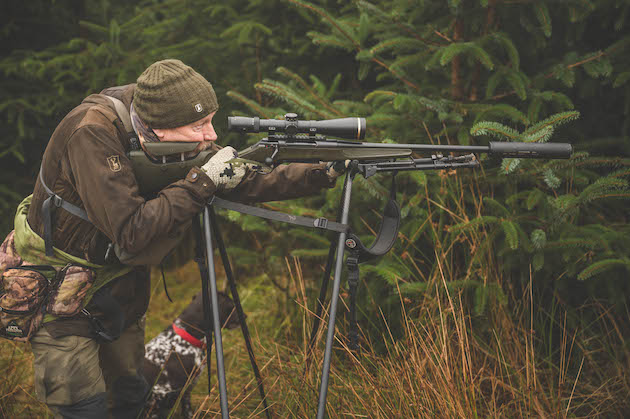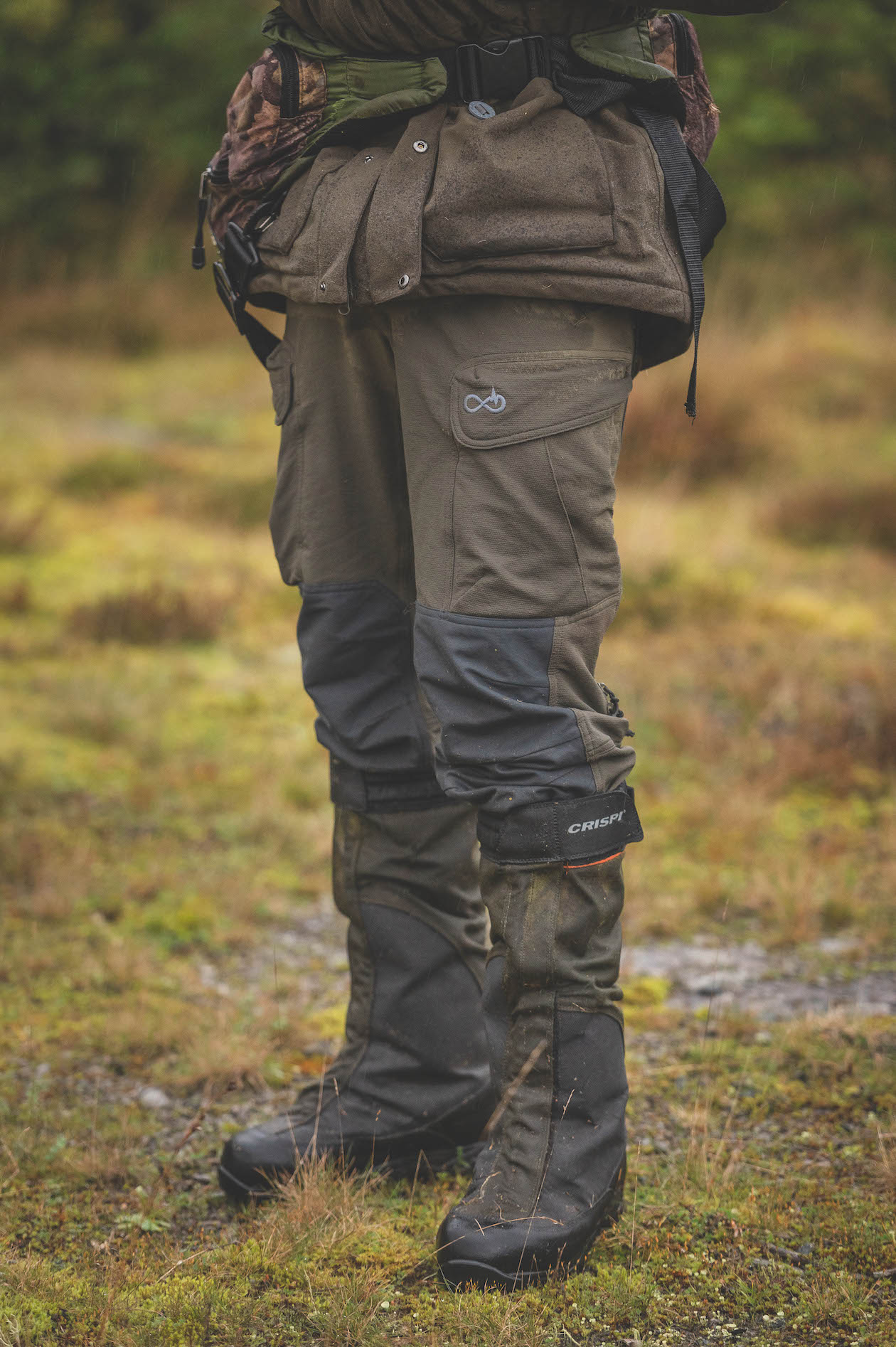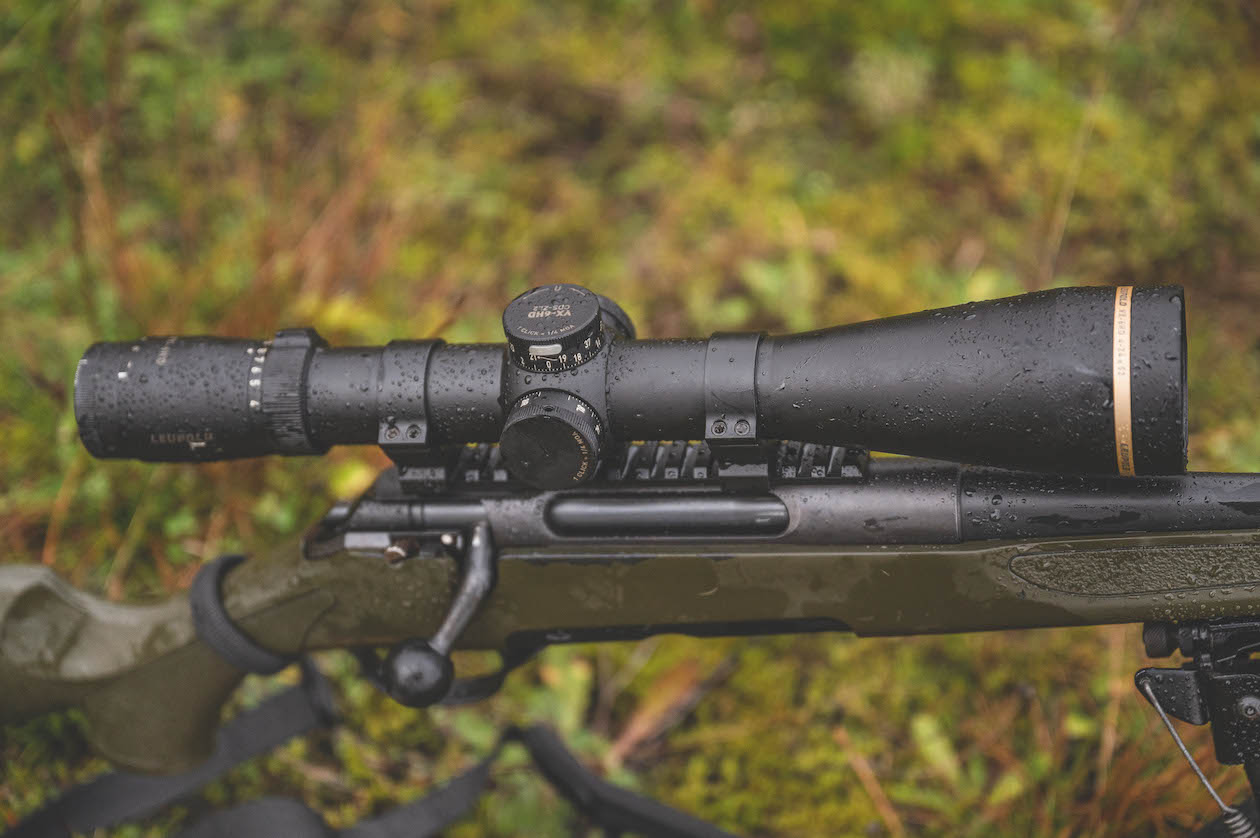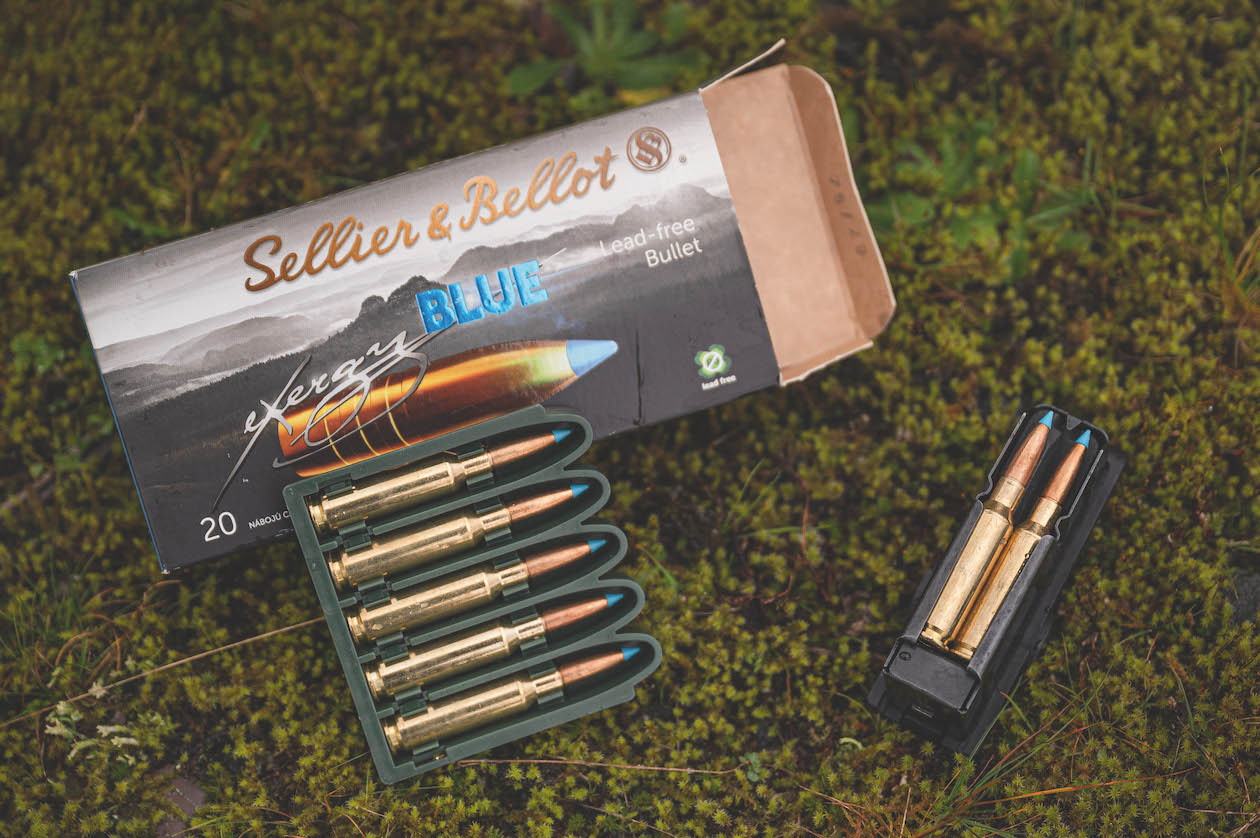Win CENS ProFlex DX5 earplugs worth £1,149 – enter here
Stalking kit chosen by Chris Dalton for Shooting Times
 A steady shooting position provided by the Viper-Flex sticks
A steady shooting position provided by the Viper-Flex sticks
Early spring is a crucial time for deer managers, and I spend a lot of time on the ground monitoring deer movement and activity. Both sexes are becoming more active as the days lengthen, with the does feeding longer as embryos develop and the bucks thinking about territories and starting to fray. (Read Chris’s piece on the best hunting trousers.)
With the cover down, we are still experiencing ground frosts and deer are becoming more visible as they are drawn out to feed on young tender shoots and buds, which are now emerging full of nutrients in the forest and hedge margins.
It is time to assess if cull targets were correctly set. Deer have a habit of disappearing, which can lead you to hold off on shooting before you reach your original target, only for them to reappear in numbers around this time of year. If this happens, there is still time to address it by shooting a few more does. However, at this late stage in the season, I prefer to concentrate on the youngsters from last year’s retention.
As we approach the crossover on to roebucks on 1 April, I am also forming my cull plan for next year. Young bucks will soon be cast out and must find their own patch. I’m looking at the number of younger males coming through the winter; these are the deer that will form the largest percentage of next year’s male roe cull. (Read our guide to deer seasons and different species.)
A lot of the deer I stalk are taken with guests but, in some areas — and certainly if larger numbers need to be taken or if time is against me — I do much of this work myself. As well as establishing an effective cull plan, I make sure that I have the best stalking kit to achieve my targets for the season.
Chris Dalton’s top stalking kit choices
Chris Dalton rates the Haenel Jaeger 10 in 6.5 Creedmoor, resting on Viper-Flex sticks
Haenel Jaeger 10 rifle in 6.5 Creedmoor RRP £1,510
First, I want a consistently accurate rifle that is comfortable to use and shoots flat for my deer-culling activities. Confidence in any rifle is paramount. As a lot of my stalking is in woodland where my target may only be partially visible through a gap in the trees — or as it crosses and stops briefly down a planting line — pinpoint accuracy is essential. I prefer rifles in 6.5 calibre, originally using 6.5×55 (or ‘Swedish’), but I have recently added Creedmoor to the mix.
The Haenel Jaeger 10 is invariably the first rifle I will select from the gun cabinet. It has excellent balance but is sufficiently weighty to give stability when shooting from sticks. The raisable cheekpiece allows me to achieve a custom fit, which is particularly useful when shooting in challenging terrain.
Fitted with a four-shot magazine, it has a quiet and smooth bolt operation, allowing a second shot to be taken if the opportunity arises. The laminate stock makes for easy cleaning and drying.
Some vital tweaks make the Viper-Flex Styx Pro do the job perfectly
Viper-Flex Styx Pro quad sticks RRP from £335 (available from 1 April)
Approximately 70% of any deer I shoot will be taken from either a standing or kneeling position using sticks. In woodland stalking, this rises to about 95%. In order to provide the least margin for error, I want a stable platform for the shot. Over the years I have tried a range of bipods, tripods and quad sticks, and for the past decade my preference for stalking kit has been these quad sticks from Viper-Flex.
The obvious advantage of quad sticks is the stability of the platform, as you have two points of contact for the rifle: front and back. With the Viper- Flex sticks, you also have the option to fully extend the legs outwards to take kneeling shots. Not many quads allow you to do this.
Until recently, I did have a couple of criticisms; they could be noisy in high winds and they were heavier than similar sticks. Both issues have been addressed in the past month, with the launch of the latest version of the Viper-Flex Styx Pro. Having used them for the past few weeks, I have found them to be an excellent upgrade. While they are not cheap, they do the job perfectly and are by far the best on the market.

A built-in gaiter ensures your feet will stay dry, whatever the weather
Crispi Highland GTX boots RRP £450
Boots are often overlooked when deciding on stalking kit. When facing challenging conditions, there is nothing worse than having wet feet or, more importantly, a lack of grip or support when clambering over scree banks and slippery rocks. There are a number of established bootmakers, but a relative newcomer to the British hunting market is Crispi — an Italian family-owned company with a reputation for quality.
I was first introduced to these boots by some French woodcock hunters who swore by them; they sent me a pair to try before they were available in the UK. I was immediately impressed by the blend of technical qualities and comfort. I like the Highland Pro GTX, a clever mix of a short-leg boot with a built-in gaiter that fits snugly up the calf to just below the knee. It’s secured by a strong zip and Velcro fastening. Having completed two full seasons in these, I have yet to try anything better — nor have I had wet feet. (Read more on our guide to the best shooting boots.)
The Swarovski 10×42 EL Range binoculars are extremely effective in low light, which is crucial
Swarovski 10×42 EL Range binoculars RRP £2,890
Binoculars are the single most important item for professional deer managers. This is the piece of stalking kit equipment you will rely on most, so invest appropriately. If I spot a deer at distance, I do not want to waste time stalking it if it is out of season or outside my cull plan for the block.
I have used Swarovski binoculars for my entire professional career as a stalking outfitter and have yet to find anything else that comes close. I upgraded to a pair of 10×42 EL Range binoculars more than 15 years ago and I don’t leave the house without them.
Much like with an effective scope, it is the clarity of glass and their effectiveness in low light that gives them the edge. If a close stalk is not possible – due to time, light, weather or terrain – having the ability to accurately assess distances also allows me to take longer shots with total confidence.

A quality riflescope will help you spot and shoot deer in harsh conditions
Leupold VX6-HD 4-24×52 riflescope RRP from £2,750
Stalking both sexes of any species requires good optics, especially in the winter and early spring. Most deer are active during the golden hours — just before sunrise and after sunset. Visibility will be poor due to low light, as well as cloud, rain or mist. A quality riflescope will help you spot and successfully shoot deer in these harsh conditions, whereas a lesser lens would show nothing. I learned the hard way that you should always buy the best optics you can afford when putting together your stalking kit.
Based on this, I’ve found that the Leupold VX6-HD offers top-end quality. I got my hands on this lovely 4-24×52 scope around a year ago and have been impressed with its performance through the seasons. It’s reasonably priced considering the lens quality and has excellent low-light gathering qualities, essential for winter roe. I like the relatively large dials and controls, and the sturdy design seems ideally suited to woodland roe stalking. The elevated turret has a locking mechanism that eliminates accidental movements when carrying it through thick cover. And for ease of use, the Leupold compares favourably with other brands, which can be almost double the price.

The distinctive tip helps to deliver improved exit ballistics and facilitates good expansion
Sellier & Bellot Blue 120-gr TXRG bullet in 6.5 Creedmoor
Lastly, any stalker must select the correct ammunition for his or her quarry. For the past 12 months, I have been transitioning to non-toxic ammo and was not expecting the lead alternatives to be up to speed in terms of performance. More importantly, I had serious reservations as to how they would perform on live quarry.
I am pleased to say that I have been proved wrong on several counts and, having tried various rounds, have settled on Sellier & Bellot Blue. I use the 120-gr TXRG in 6.5 Creedmoor, fitted with a distinctive blue plastic tip to deliver improved exit ballistics and good expansion. They have proved superbly accurate out of the box and have performed admirably in the field, in any conditions, on all six deer species.
Related Articles
Get the latest news delivered direct to your door
Subscribe to Shooting Times & Country
Discover the ultimate companion for field sports enthusiasts with Shooting Times & Country Magazine, the UK’s leading weekly publication that has been at the forefront of shooting culture since 1882. Subscribers gain access to expert tips, comprehensive gear reviews, seasonal advice and a vibrant community of like-minded shooters.
Save on shop price when you subscribe with weekly issues featuring in-depth articles on gundog training, exclusive member offers and access to the digital back issue library. A Shooting Times & Country subscription is more than a magazine, don’t just read about the countryside; immerse yourself in its most authoritative and engaging publication.







